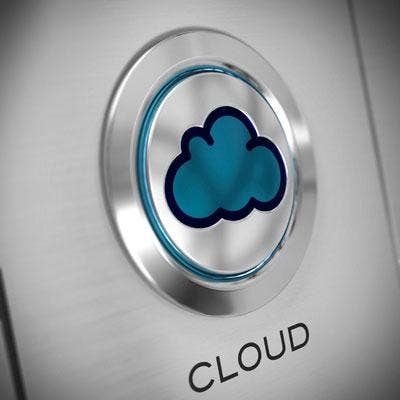10 Cloud Predictions For 2015

A Cloudy Crystal Ball
First a disclaimer: Attempts to predict near-term developments in the tech arena often amount to fools' errands, ones that leave embarrassing documentation of the would-be prognosticator's ignorance.
That's under normal circumstances, and we're living through an era in which the buzzword is "disruption" for a reason -- the tech world is currently experiencing a number of major ones, and most revolve around the tectonic shift that is cloud computing.
But we've got the insight to go ahead and take a stab at it anyway. Here's CRN's list of 2015 cloud predictions.

10. Security Concerns Become More Concerning
If the Target and Home Depot breaches didn't instill enough anxiety, the Sony Pictures hack certainly did.
More businesses than ever are inclined to migrate critical data and workloads to public clouds, but the high-profile attacks have also left them more worried than ever.
The concerns are not entirely unfounded -- mobile workforces and off-site computing are undermining traditional security measures like firewalls and anti-malware tools. What's the point of guarding your perimeter when most important activity, from data storage to user access, happens outside that perimeter?
Solution providers should be prepared to start every big cloud migration with a serious discussion about privacy and security. And partners of nontraditional vendors championing alternative approaches to security such as OpenDNS, FireLayers and Covata will see opportunities.

9. DevOps Developments
Once there was IT infrastructure management, and there was application development, and the two were mostly considered non-overlapping magisteria.
But the cloud world has spawned the phenomena that is DevOps, and now applications are inextricably linked to the environments in which they are deployed.
These days, it's all about fast, agile, portable and resilient development, which is why platforms like Docker, Ansible, ElasticBox and Puppet have gotten so much attention in 2014, and why AWS recently introduced a DevOps certification.
Look for more vendors to come around offering solutions for automating time-intensive IT tasks and making it easier to provision, discover, manage and deploy applications on diverse platforms.

8. Hybrid Clouds Create Channel Opportunities
It looks like it's not going to be an either/or but a both/and scenario with the cloud. The experts say most companies will ultimately be running workloads in some combination of public and private cloud environments for the foreseeable future.
In other words, in 2015 a hybrid world will take further shape.
For the channel, that means plenty of work standing up, integrating and deploying diverse applications onto disparate infrastructure platforms, and, at least in theory, making them all seamlessly work together. The solution provider with those chops is looking at a prosperous year.

7. All In
There was a time when enterprises would carefully test the waters of the cloud. Maybe hosted email, or file syncing and sharing, or backup and disaster recovery were a first step.
But now that the cloud's many benefits are better understood, business execs are finding that measured approach just too slow. And it's not the IT department that's advising a dive into the deep end of the pool, but the C-suite.
Many large solution providers say the biggest change they have seen of late is that enterprise customers are forgoing the wooing process that previously characterized cloud migrations and going all in from the get go.
In 2015, expect to see a number of brand-name American companies dump their data centers and move all IT operations to the cloud.

6. Shadow IT Sees the Light
Employees have been bringing their consumer cloud products into the office for years now. And IT admins, for the most part, have either been oblivious to the proliferation of shadow IT, or tacitly tolerant.
But the CIO is finally getting wise to the extent of unsecured, unmanaged applications handling sensitive business data, and realizes something needs to be done.
It looks like there's room for compromise. Innovative vendors such as Netskope and Skyhigh Networks are offering solutions that bring visibility to these unapproved applications and hopefully paving the way for their safe use.
Solution providers offering enterprise-grade solutions that re-create the experience of using popular consumer apps in an enterprise environment will find grateful customers.

5. Telecom Agents And IT Solution Providers Meld
There was a time when one guy came into your office to sling wires, setting up all those telecommunications assets such as phones, PBXes and networks, and a totally different guy managed your IT systems. Funny thing is, both types of legacy businesses are being uprooted by the cloud.
For many companies, their connectivity assets are pretty much being installed and managed in the same way as their computing assets -- in some off-site virtualized realm.
In a cloud world, the telecom agent and IT solution provider are not so different at all, and both are trying to get the lay of the new landscape. Look for mergers and acquisitions between the two types of businesses in 2015.

4. More Mobile Workforce
People work from just about anywhere these days. For some American professionals, their fellow Starbucks patrons often feel more like co-workers than those people back at corporate headquarters.
But talk to mobility experts and they will tell you that's just a taste of what's to come.
Phil Redmond, vice president of mobile solutions and strategy at Citrix, told CRN he predicts that next year mobile employees will be using, on average, somewhere between five and 10 mobile enterprise apps on their smartphones or tablets.
Many solution providers are finding a niche in facilitating these technologies, and the cloud infrastructure that makes them possible, helping to decentralize the modern office even further.
The trend will continue in 2015, and it's not hard to imagine a day when employees won't even remember the route to their office.

3. Wearables Enter the Enterprise
Wearable technologies -- everything from glasses, to watches to clothing embedded with integrated sensors -- are mostly thought of as the cool consumer devices of tomorrow.
But as these technologies mature, expect to see them applied to a range of business applications and closely integrated with corporate clouds storing and analyzing the data they produce. 2015 might just be the year this begins in earnest.

2. Internet of Things Emerges
We've been hearing about the Internet of Things for some time now, but 2015 might be the year that the promise of deploying possibly billions of networked, intelligent and autonomous devices starts to come into focus.
Googla and Amazon are both heavily investing in developing interconnected home and office technologies that make appliances, furniture, lighting systems, entry points and building protection systems smarter and easier to control.
But with so much public attention on cyberthreats, it remains to be seen whether consumers will be comfortable with the possibility that their front door can be hacked open.
The Internet of Things promises breakthrough solutions in many industries, from health care to manufacturing, and should create entirely novel opportunities for large resellers, systems integrators, and cybersecurity specialists.

1. Clouds Coalesce
We've seen scads of cloud solutions come to market for specific business departments and processes -- sales uses one SaaS vendor, IT another. For many enterprises, HR, finance, billing, product development and project management all employ their own isolated cloud platforms.
Ultimately, these clouds will need to connect to each other to provide the expansive functionality that users are demanding, all managed from the single pane of glass and seamlessly sharing data.
Look for new integration solutions to come to market in 2015 from the big players in all these markets, as well as from agile startups leveraging the power of public APIs.
’What we’re seeing happen is an evolution as cloud vendors have begun to build the requisite connections to draw themselves closer,’ Allan Leinwand, vice president and CTO of cloud platform and infrastructure at ServiceNow, told CRN.